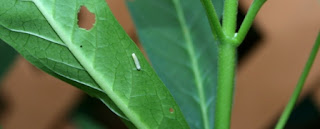 It is that time of year when some Northern Cardinals (Cardinalis cardinalis) exhibit featherless heads. Two years ago I noticed a few of our backyard cardinals in various states of baldness in late August. After googling "bald cardinal" I came up with over 700,000 websites with that term, so I knew I was not the only one witnessing this odd molting pattern.
It is that time of year when some Northern Cardinals (Cardinalis cardinalis) exhibit featherless heads. Two years ago I noticed a few of our backyard cardinals in various states of baldness in late August. After googling "bald cardinal" I came up with over 700,000 websites with that term, so I knew I was not the only one witnessing this odd molting pattern.Most birds molt twice a year, in fall and then again in spring. In early fall most birds go through what is called a pre-basic molt. This is where the birds gradually lose their worn breeding feathers (plumage) and grow in their fall plumage, which is often not as bright and showy as their breeding plumage. Having duller feather colors in the fall and winter assist the birds in camouflaging themselves from predators. In the spring they molt into fresher brighter colors that assist them in attracting mates.
So is the case of the balding cardinals just pre-basic molting? Maybe. Or it could be feather mites. Or it could be both molting and feather mites. Scientists who study birds are now just starting to look at this condition. Either way, it does not seem to have a negaitive affect on the bird. Other than looking scary for a little while (some refer to the cardinals in this state as "mini red vultures"), they still behave the same way, and soon the feathers grow back in.
 By the way, this temporary baldness has also been reported in Blue Jays and Grackles!
By the way, this temporary baldness has also been reported in Blue Jays and Grackles!












